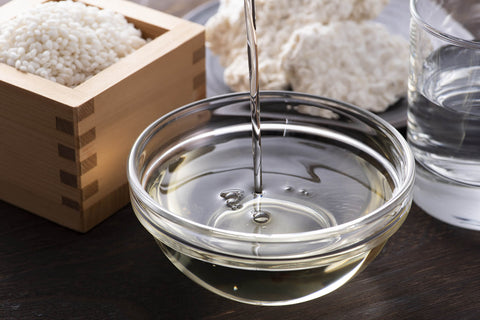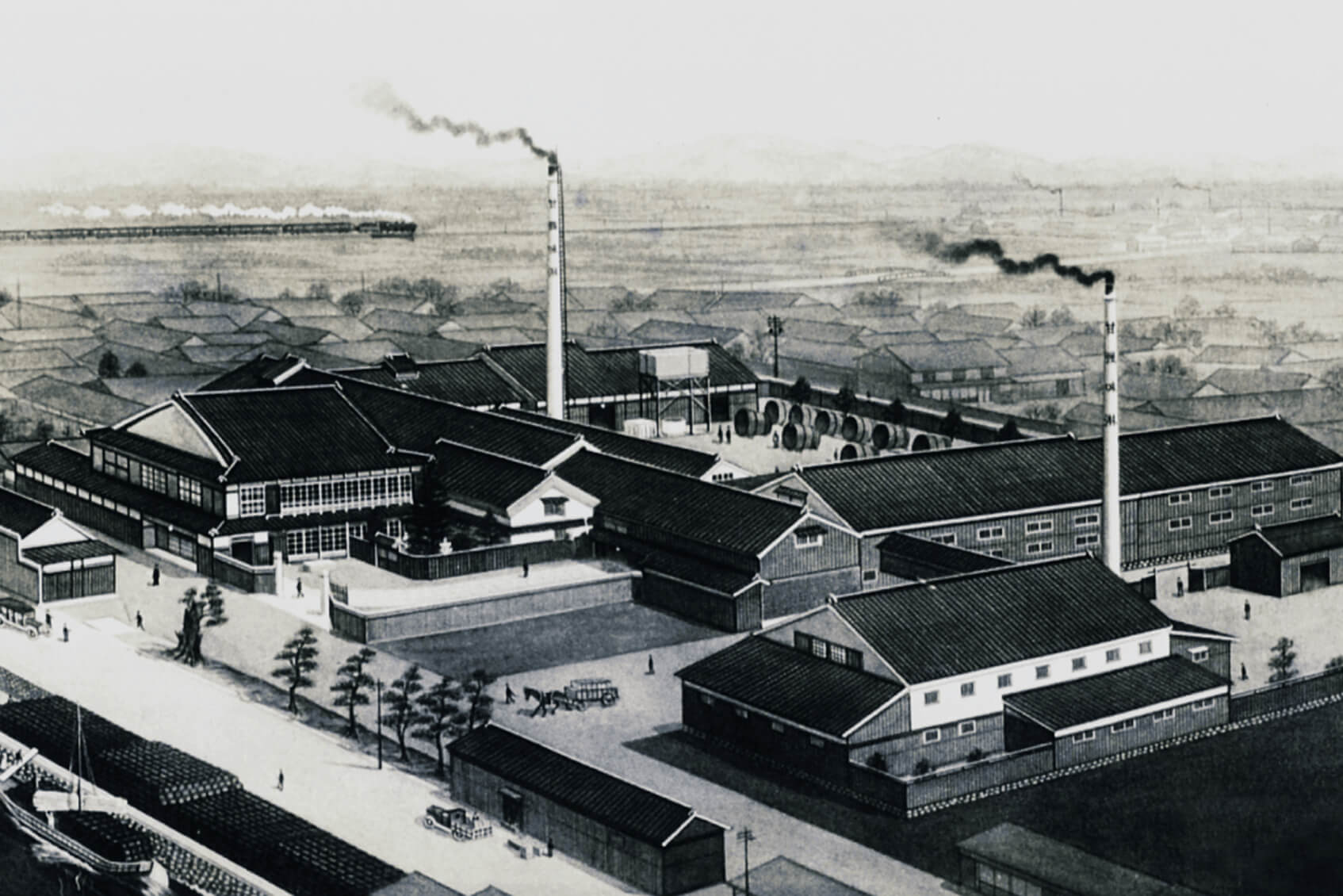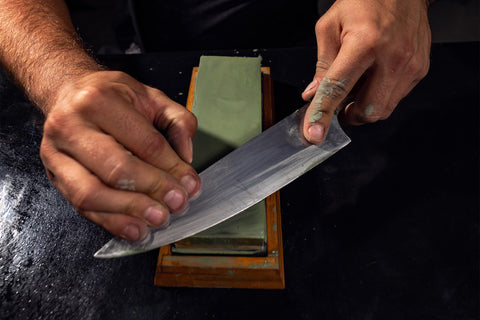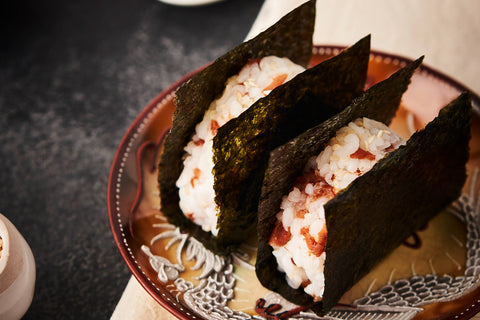
Mirin is a type of rice wine popular in Japanese cuisine. It is produced in a similar manner to sake, but using glutinous rice (rather than polished sake rice) in the mash. The difference of grain in the mash mixture (moromi) results in less of the natural sugars converting to alcohol. This produces a lower alcohol content and a higher sugar content, creating a sweet-tasting rice wine, with a slight acidity.

History
Much like Japan’s other famous rice wine, sake, the history of mirin can be difficult to pin down. Most historians accept that the liquid was first introduced during the provincial wars of 1467 to 1615, though they differ over how this came about. Some believe that mirin was accidentally created by blending distilled alcohol with sweet sake to prevent spoilage. Others think that mirin is a corruption of the Chinese drink – milin – which has a sweet taste, like trickling honey, and was brought to Japan by traders. Whatever the truth, mirin became popular across Japan throughout the Edo period, being a sweet variant of sake, often taken as a drink by women. Since mirin was more readily available than sugar, it soon became used as an ingredient in cooking. The introduction of a steep alcohol tax in the country led to mirin manufacturers adding salt to their product, making it unsuitable for drinking as an alcoholic beverage, while still retaining sufficient sweetness for use in Japanese cuisine.
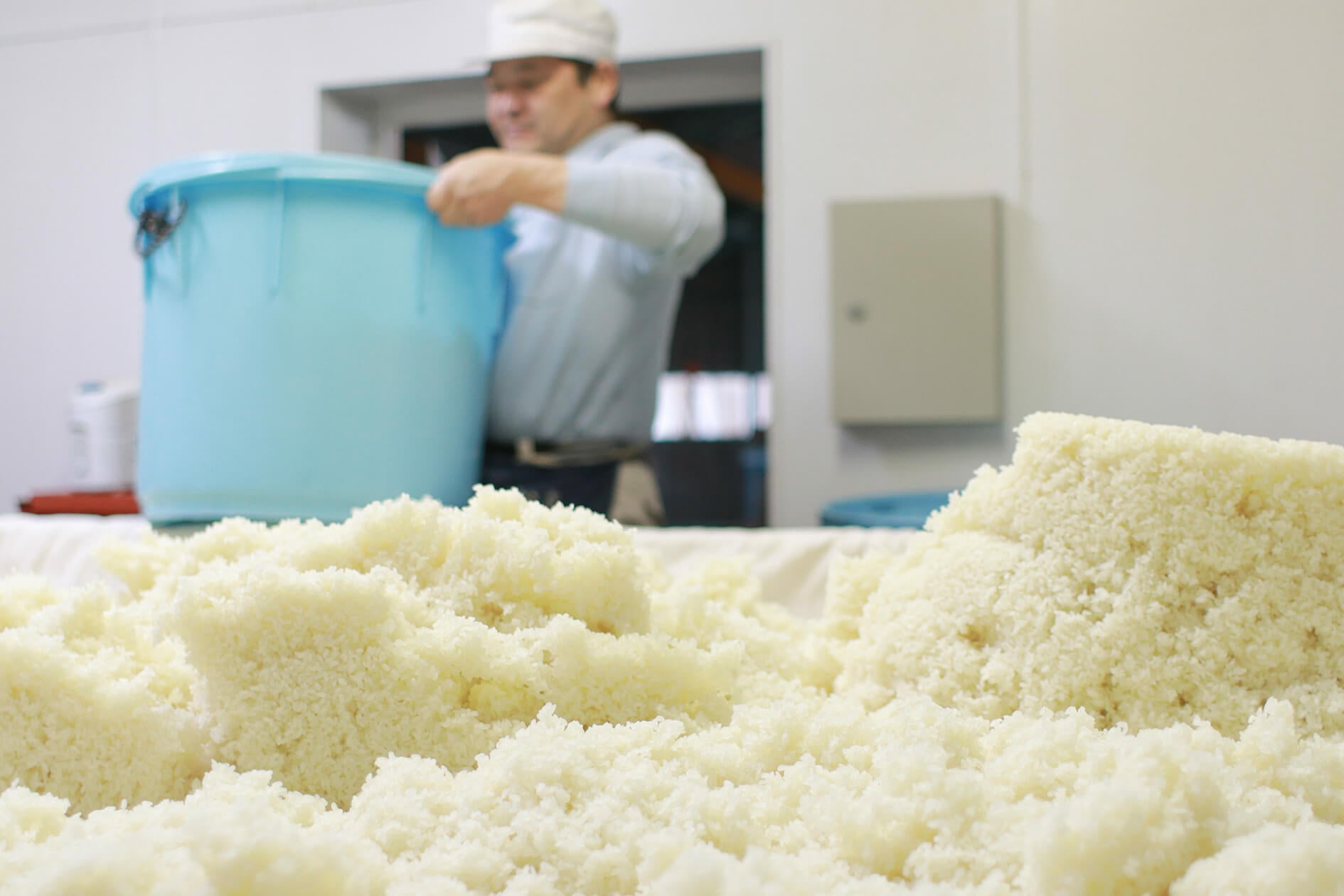
Production
Like sake, with which it shares much in common, high-quality mirin requires high-quality ingredients, which undergo a fermentation and saccharification process before being ready for sale and consumption.
Ingredients
The key ingredients for sake are rice, water, kōji-kin, and distilled alcohol (shochu). Mirin uses glutinous rice, rather than that saka mai used in the production of sake. While this rice is polished to remove the outer husk and rice bran, it does not undergo the intense polishing that sake rice does. This leaves much of the outer layers – the ones containing high concentrations of fat, vitamins, and proteins – largely intact. This means that a smaller proportion of the eventual mirin mash is made up of starch, resulting in a lower concentration of alcohol. Mirin production uses water for washing and steaming the rice base and creating the mash, as well as diluting the final product before bottling. Since the wine also uses distilled alcohol in its mix, the purity and mineral content of the water is of less importance than in the making of sake. Kōji-kin is an enzyme-secreting fungus much used in Japanese cuisine for fermentation purposes. The spores of this fungus are scattered across steamed glutinous rice, creating kōji. The spores are left to germinate within the kōji, their enzymes releasing to convert rice starch into glucose prior to saccharification. Mirin requires the addition of a distilled liquor – shochu – to the rice and kōji mix. Shochu is normally distilled from rice, barley, sweet potatoes, buckwheat, or brown sugar – all of which have high starch or glucose contents. Because the use of glutinous rice reduces the proportion of starch in the mash, incorporating the shochu makes up for that deficiency and speeds up the saccharification process.

Fermentation and saccharification
The mixture of steamed glutinous rice, kōji, and shochu is placed into large tanks, where it is left to ferment and mature for between one and two months. During this time, the kōji breaks down the starch in the mirin mash, converting it to glucose, giving mirin its distinctive sweet flavour. Once the saccharification stage is complete, the contents of the tanks are pressed, releasing the liquid mirin, which is then heated and filtered to improve its purity and flavour.
Storage
Mirin is a long-lasting food item, whether used as an ingredient or a beverage. However, the quality of the mirin starts to deteriorate after two months or so of being opened, due to the natural evaporation of the alcohol, if held at room temperature. For best results, store mirin in its original bottle, in the refrigerator, with the cap tightly sealed.

Taste and flavour
Mirin has a unique taste, all its own, being sweet, tangy, and umami all at the same time. Depending on the type of shochu used during the fermentation and saccharification stage, subtle flavour notes can be incorporated into the mirin itself. With a sugar content of between 40 and 50%, the main taste is one of sweetness that tends to overpower the taste of alcohol, making it a popular sipping liquor.

What is Mirin used for?
While mirin can be drunk as a beverage, it is more commonly used as a liquid seasoning. It is used to create sweet soup bases, a variety of simmered dishes, where the flavour is slowly absorbed into the dish, and several sauces, such as kabayaki and teriyaki. When brushed lightly across grilled fish, mirin not only imparts a delightful sweetness that complements the flavour of the fish, its alcohol content can help eliminate any lingering fishy aromas. Mirin can be heated prior to use, evaporating some of the alcohol, and imparting a more savoury aroma to the ingredient.
Varieties
There are three common types of mirin available for consumption – hon mirin, shio mirin, and shin mirin.hon mirin: otherwise known as true mirin, hon mirin is produced over 40-60 days and has an alcohol content of around 14%. It is suitable for cooking and drinking.
shio mirin: this type of mirin – literally, salt mirin – contains at least 1.5% salt, added following the fermentation process. This makes it unpalatable for consumption as a beverage, therefore avoiding an alcohol tax, though it can still be used in cooking.
shin mirin: translating as new mirin, this product typically contains less that 1% alcohol, whilst retaining a similar (if less nuanced) flavour to hon mirin.
Popular Products
These are just some of the mirin products and variations that prove particularly popular at SushiSushi. Click on a link to learn more, or visit our online store for more mirin products.
hinode shin mirin
With an alcohol content of just 0.9% vol, this mirin has high sugar levels, resulting in a sweet taste. While comparable in flavour to the purer hon mirin, this shin mirin is cheaper to produce, making it a cost-effective alternative.
Hinode Hon Mirin
Hindoe’s hon mirin is genuine, Japanese-made mirin, produced using traditional methods. It has a high alcohol content of 14%, which delivers both flavour and potency to wide range of Japanese dishes. This is a popular product among our Michelin-starred customers.
Kakutani Mikawa Mirin
Another hone mirin much-admired by our Michelin-starred customers, Mikawa mirin has been aged for three years, in which time it develops its unique, super-rich flavours. It was even used in some of the dishes served at the G7 Summit in 2016.
Kankyo Black Mirin
This specially-produced black mirin is carefully-stored and left to age for more than 20 years after fermentation. This produces a much richer flavour as the taste of the alcohol disappears. This dark mirin has a sweetness comparable to brown sugar.
Our Suppliers
Here at SushiSushi, we source our mirin from some of the most well-respected and established producers in Japan. These include:
King Brewing
The King Brewing Co. Ltd, is part of the Hinode Holdings Group, an organisation that has been actively producing mirin and sake for more than 120 years. Their aim is to bring satisfaction and happiness to customers every day, which they certainly achieve with their quality mirin.Kankyo Shuzo
Kankyo Shuzo has been producing high-quality mirin at its facility in Kanie-cho for more than 150 years. They use locally harvested glutinous rice in their mirin production, and still utilise some of the site’s original buildings, four of which are registered tangible cultural property.

